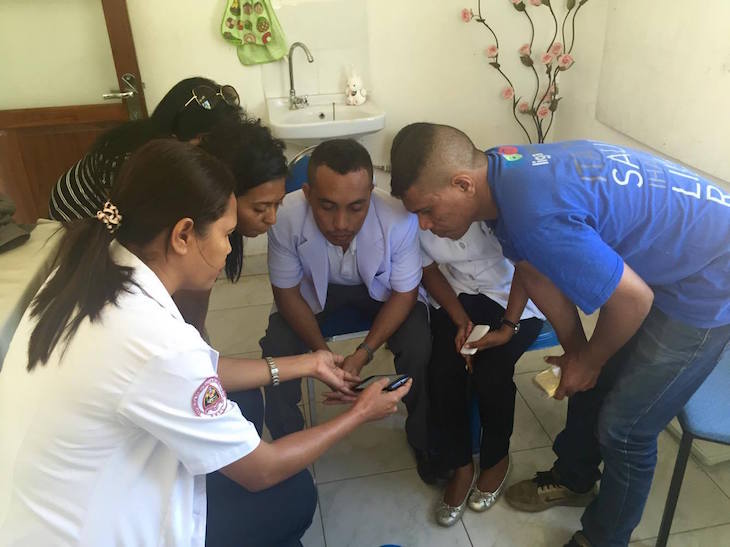Introspection on my product design experience in Timor-Leste
Since joining Catalpa International in November 2015, I have had the wonderful opportunity to live and work in the young and beautiful Timor-Leste. From the get-go, I have been involved in the design and development of new and existing products in the Maternal & Child Health, and Water and Sanitation spaces. Building appropriate technologies is fun. Below is a an unordered list of takeaways that have informed my product design process or come about as a result of said process. Have a gander and please share feedback.
 User training and research with Liga Inan health workers in Liquica
User training and research with Liga Inan health workers in Liquica
On Users
Users do not like to think. They have their lives to deal with already. All a user wants is a solution to a pertinent problem. Ask questions, use the feedback and build something simple and intuitive. Minimize their interaction compensation for using your product. “It just works” equals great design.
On Building Product
Whether building new products or improving existing products, approach matters. A new product requires you ask the right questions. What are the jobs to be done? How do they affect the design? How do users feel about your design? Why do they feel that way? Figuring this out early gives your product the legs to sustain a user journey.
Improving an existing product means focusing on high impact, high effort work. Sometimes, this means doubling down on a few core features and ditching all else. Other times it means focusing your product on a specific set of users. Either way, do not lose sight of the target. More often than not, a nimble product hits the target faster.
For any given product, the design, development and implementation phases should feed back into user and product research .
On Creativity
Deliberate decision making culminates in a creative process. Define a mission, devise a strategy and let every design decision reinforce this strategy. This set direction should yield what your strategy envisioned. Creativity is as much as science as it is an art, as you will.
On Collaboration
From the get go, get your backend engineers involved in the design process. Sometimes, a seemingly worthwhile design idea lacks logical cohesion. Better to find out early. Design informed by both the User Experience and Engineering works better. I think it a required best practice if you intend to build great products.
On Learning
Being a designer who codes means having to keep up with ever-progressive design, user experience, and product design trends while also needing to know your basics around front and midend development. I follow a number of incredble organizations in this space. I highly recommend Intercom, UX Booth, InVision, UXPin, and Google Design. Julie Zhuo of Facebook Product maintains an articulate account of their product design experiences.
Also, hold onto your imposter syndrome if only ever so slightly. It is there to remind you to check yourself; to nurture a continued thirst for knowledge and experiences. Aspire to your highest level of incompetence. Always.
Wrapping Up
Obrigado barak ba tempu. Thank you for taking the time to read this. Please leave a comment if you have any feedback or thoughts regarding this piece.
If you enjoyed reading this and want to support my quest for knowledge, please buy me a book.